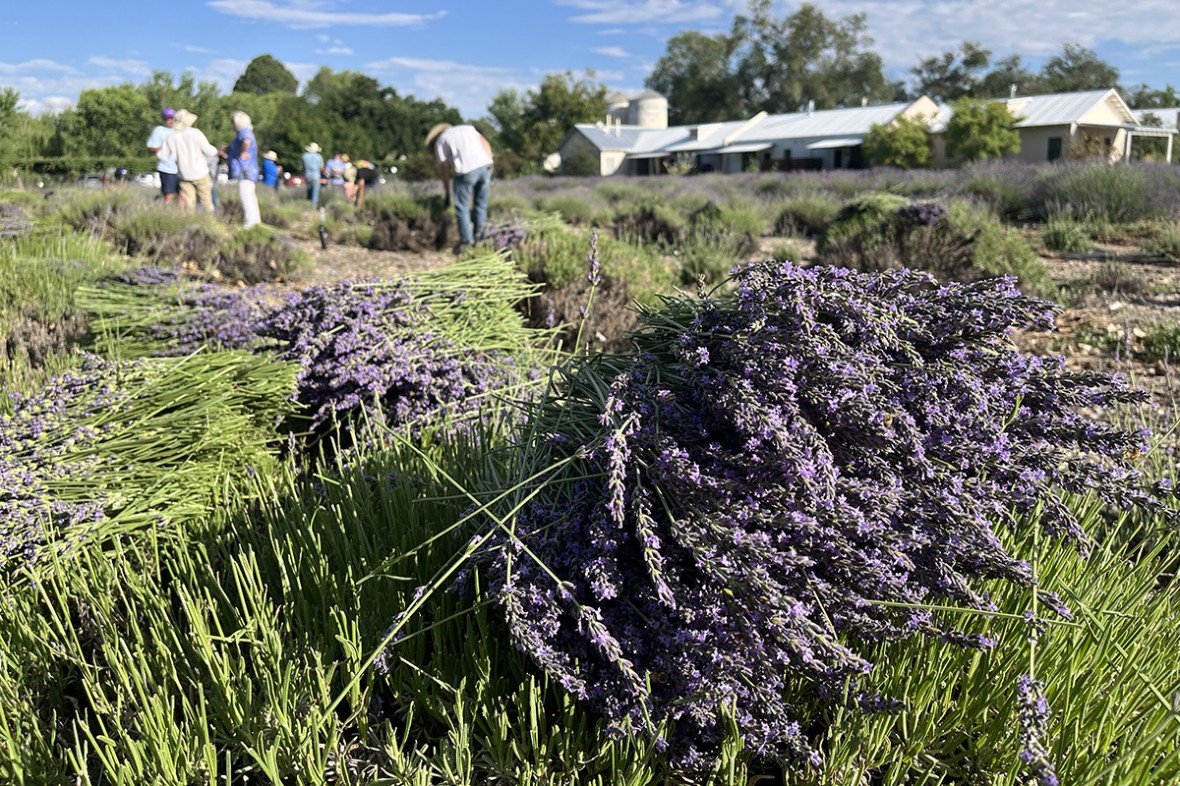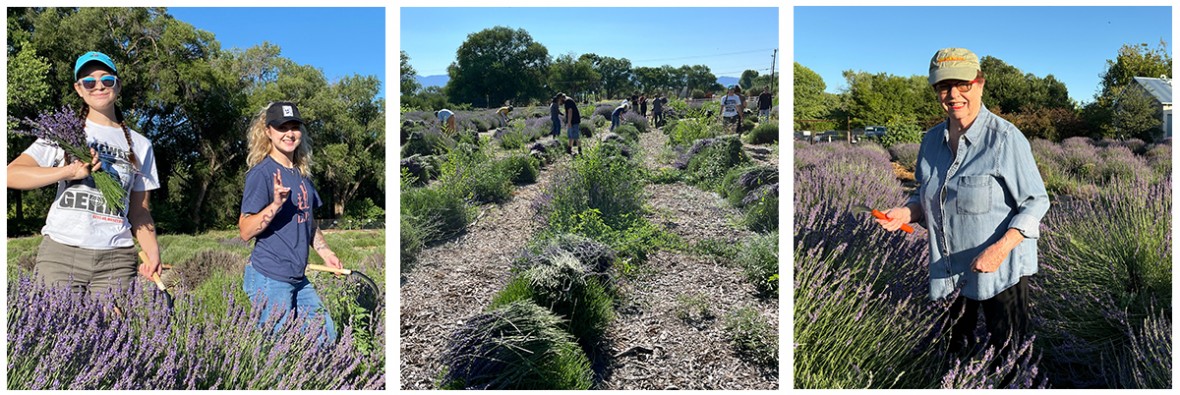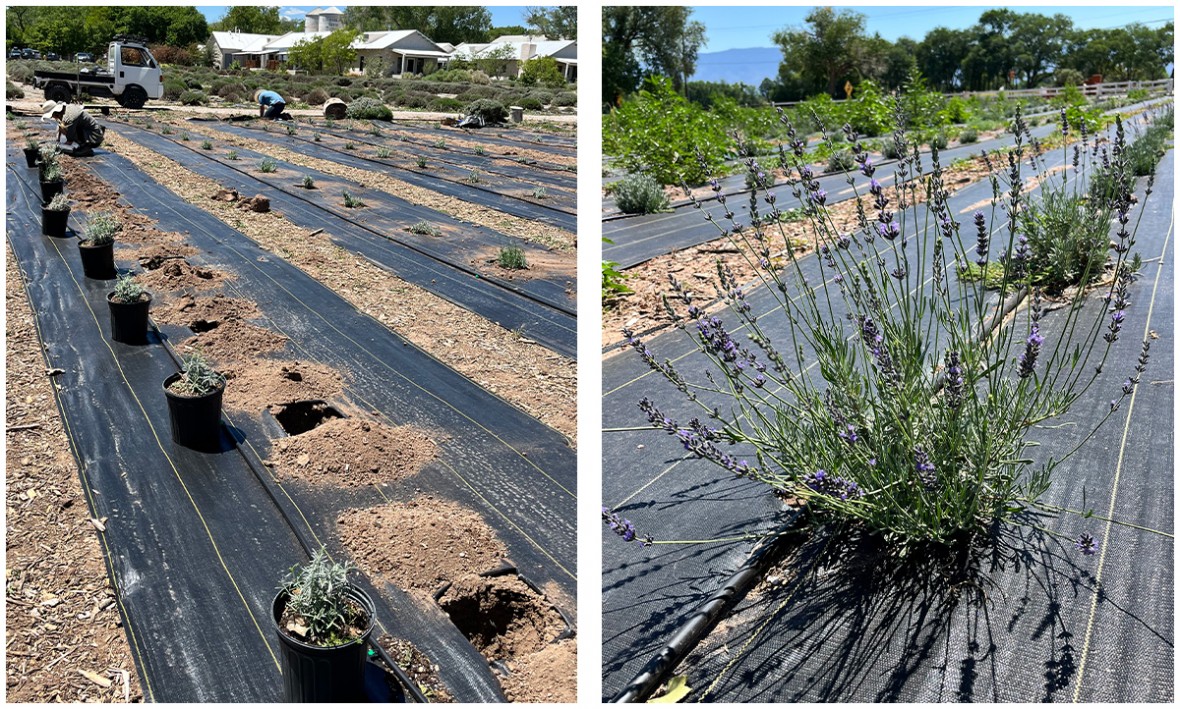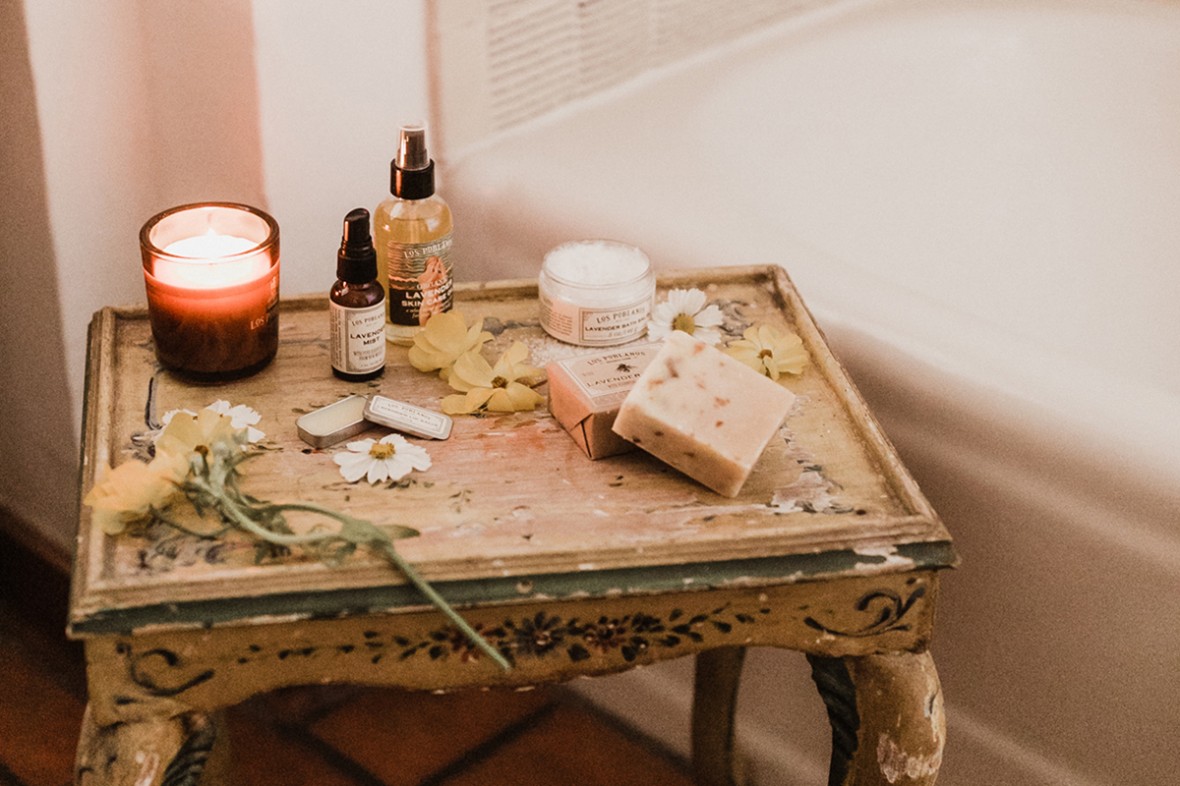
The annual lavender harvest occurs during a brief window in July, dipping into late June and early August, depending on the year. It’s an all-hands-on-deck situation, with groups from all departments coming together to pitch in, enjoy each other’s company and soak up the lavender-scented early morning and evening hours overlooking the Sandia mountains. Our kitchen team has been holding their daily meetings in the fields while harvesting the culinary lavender. Groups from Makers & Merchants, Spa, Community & Cultural Events and more have been a huge help in expediting this year’s harvest.
 Employees, friends and family all lend a hand for the lavender harvest.
Employees, friends and family all lend a hand for the lavender harvest.Time is of the essence. It can be hard to watch the sea of purple blossoms return to tidy green mounds, but our goal is to complete the harvest when the plants are at their peak essential oil production and move them quickly to distillation. This is when the buds on each stem are an equal mix of being past-bloom, peak-bloom and barely budding.
Lavender plants in our region live and average of eight to ten years and our fields are a patchwork of older and newer plants. We have found that by re-planting large sections at once rather than spot replacement, we can keep plants with similar needs together, as the young plants require different care than their more established neighbors.
Earlier in the season we were ready for a mass transplant of 500 new plants, but farming is full of surprises, and this year we were visited by a family of Killdeer, a species of protected migratory bird. They decided our lavender fields were just right for an extended stay (and we couldn’t agree more). We busied ourselves with other tasks on the farm while they raised two rounds of nestlings. When they moved on, we moved in, digging trenches, amending soil and introducing new plants to the field. We got a late start, but the young plants are well-established and full of promise for future harvests.
 New additions to the lavender fields.
New additions to the lavender fields.Maxfield Bervig, our Garden and Landscape Manager has been carefully overseeing the watering cycle to ensure that the plants can thrive while being mindful to conserve water, our most precious resource. While the traditional farming method in the Rio Grande Valley involves cycles of flooding – either from the river itself or from carefully managed acequias, we have switched to drip irrigation in response to a shifting environment. To mimic the effects of flood irritation we release water slowly in longer durations, and only at night to minimize evaporation. This method keeps plants hydrated and produces longer stems that are best for a successful harvest.
This year marks 25 years of growing, harvesting and distilling organic lavender in the Rio Grande Valley to preserve our agricultural land. As the season comes to a close, this year’s harvest is shaping up to have an excellent yield. The harvest is a team effort that brings the Los Poblanos family together and makes us grateful for the larger community that makes it all possible. Producing lavender and crafting it into products for body care, culinary confections and cocktails – and sharing that with our guests supports a cycle of preservation and abundance that couldn’t be more beautiful.

